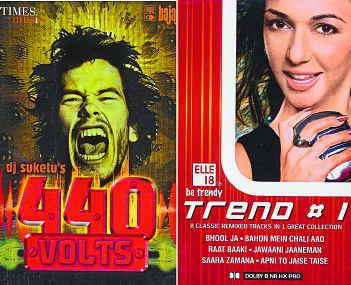| Version 10 (modified by , 13 years ago) (diff) |
|---|
The genre of the remix, as it is remembered, took old Hindi songs, added faster beats, inserted new lyrics (usually in English) and gave it a new video form. More than other song-texts, the Hindi film remix seems to work within an intertextual matrix, where not only the song itself but even the videos seem to work with a range of references/citations. Each reference echoes another, till the remix becomes a series of musical and textual echoes, bearing on its body the memories of older forms, listeners of songs and viewers of cinema, functioning as a musical palimpsest.
Within the site of the discotheque or within the house-as-studio a Disc Jockey (DJ) or any other person can create remixes, depending upon knowledge of music and the requisite techniques and technology. Techniques of creating remixes include ‘scratching’ which is, as Kjetil Hansen says, ...drag[ging] a vinyl record forwards and backwards against the needle on an ordinary turntable along the grooves, not across; though it might sound like it. This way of producing sounds has during the last two decades made the turntable become a popular instrument for both solo and ensemble playing in different musical styles, still mostly in hip-hop...(Hansen 2002: 357) Other elements in the work of DJ-ing gets divided into basic DJ-ing and advanced DJ-ing according to DJ Deepak Mutneja. He says, in a personal interview in 2009, that at the most basic level, a DJ needs to be able to mix or, as it is referred to – ‘beat matching’. As the phrase suggests you need to be able to match the beats of two different songs. The techniques of scratching as well as beat matching seem also to belong to two different technological moments. While scratching began on early turntable technology and continues with digital technology, beat-matching seemed to be, according to Mutneja’s comments part of the contemporary, digital technology of the period.
The Hindi film song remix as genre is associated, in memory, primarily with the 1990s and the early 2000s. Near the end of the first decade of this century, however, the form that popular/public memory understood and tagged as the remix seems to have disappeared (Remix “का ज़माना ख़तम है” (Singh 2009)). “The age of the remix is dead” said music salesperson Kundeev Singh, in Palika Bazaar, New Delhi in an interview. He added “अब निकालने बेकार हैं (It is useless to bring them out now).” Other shopkeepers in Mumbai in May 2009 could not sell remixes. These shopkeepers would put up small stalls/shacks, often all they had was a hand-cart. They were people who sold pirated CDs, VCDs and DVDs of music, movies and games. The prices of these CDs were low; the Mp3 CD was not more than Rs. 30 in 2009. These albums were unlike the ones available or visible in album covers such as those given below.
The albums that were not pirated and formed part of high-end production (such as those whose cover images are given above) were often subject to censorship. Channels that were broadcasting remix videos, especially those that created a furor around them because of 'explicit' material, were issued Show-Cause Notices by the Ministry of Information and Broadcasting. As an instance, see below (taken from a Ministry document DETAILS OF ORDERS/WARNINGS/ADVISORIES ISSUED TO VARIOUS TV CHANNELS, UPDATED ON 24.08.2009
Attachments
-
DJ Suketu - 440 volts and Elle 18 album.jpg
 (23.7 KB) -
added by 13 years ago.
(23.7 KB) -
added by 13 years ago.
Album covers of Hindi film song remix
-
OrdersWarningsAdvisories.pdf
 (185.8 KB) -
added by 13 years ago.
(185.8 KB) -
added by 13 years ago.
-
snapshot of orders.jpg
 (11.1 KB) -
added by 13 years ago.
(11.1 KB) -
added by 13 years ago.
